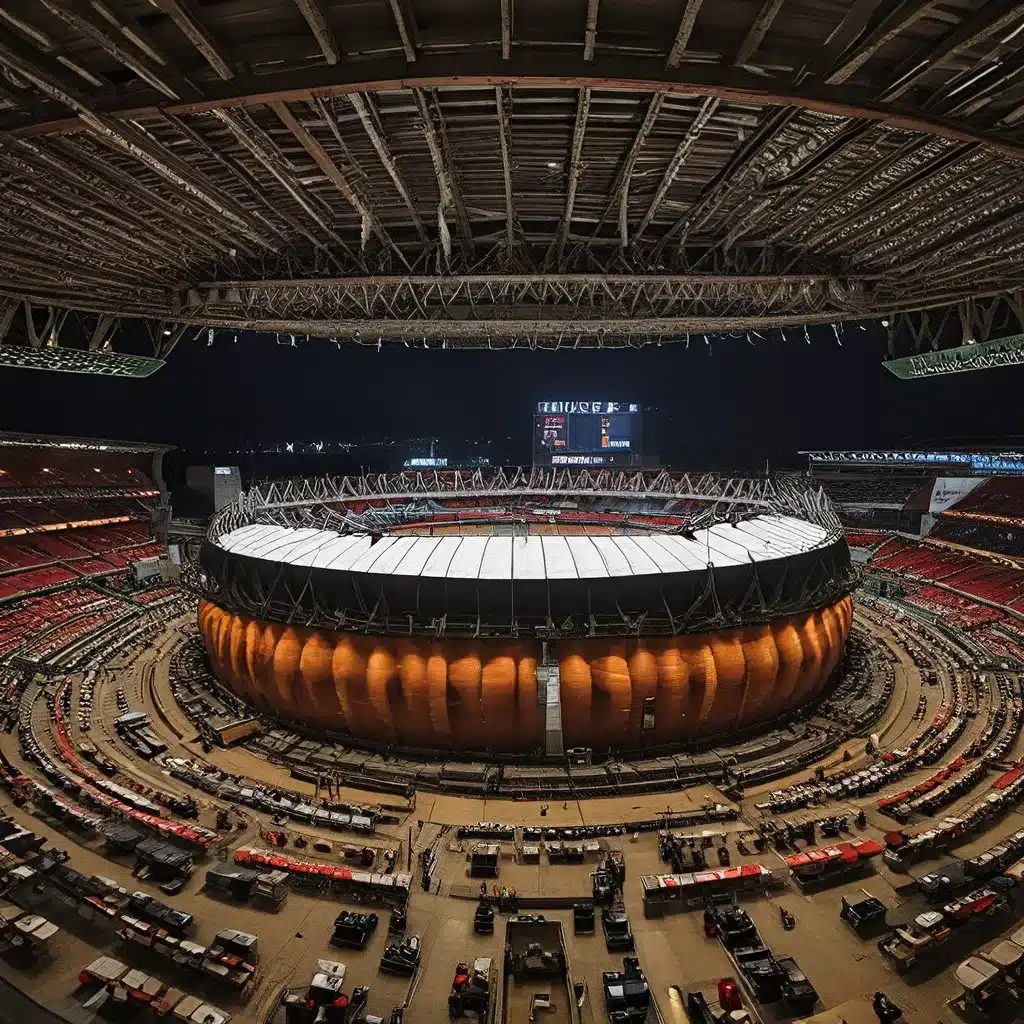
A Beacon of Welsh Pride and Perseverance
The Millennium Stadium, nestled in the heart of Cardiff, Wales, stands as a testament to the indomitable spirit of the Welsh people. This architectural marvel, which opened its doors in 1999, has not only become a symbol of national pride but also a testament to the resilience and determination of the nation. The stadium’s construction and its subsequent impact on the region have been the subject of much discussion and analysis, highlighting the profound influence it has had on the cultural and economic landscape of Wales.
Laying the Foundation for a New Era
The decision to build the Millennium Stadium was not an easy one, as it came with its fair share of challenges and controversies. In the early 1990s, the Welsh Rugby Union (WRU) recognized the need for a new, modern stadium to replace the aging Cardiff Arms Park, which had served as the national team’s home ground for decades. The proposed project, however, faced significant opposition from various stakeholders, including local residents and businesses, who were concerned about the impact on the surrounding community.
The Welsh Rugby Union, undeterred by the skepticism, forged ahead with its vision, recognizing the potential of the Millennium Stadium to become a catalyst for the regeneration of Cardiff and the wider region. The decision to build the stadium on the site of the former Cardiff Arms Park was a strategic one, as it allowed for the preservation of the site’s historic significance while providing a modern, state-of-the-art facility that could host a variety of events, from international rugby matches to concerts and cultural festivals.
Architectural Ingenuity and Innovation
The Millennium Stadium was designed by the renowned architectural firm Populous, formerly known as HOK Sport. The stadium’s striking design, which features a retractable roof, was a bold and innovative move that set it apart from traditional sports venues. This architectural marvel allowed the stadium to be used year-round, regardless of weather conditions, and provided an unparalleled experience for spectators.
The retractable roof, which spans an impressive 105 meters in length and 75 meters in width, is a true engineering feat. The roof is made up of a series of panels that can be opened or closed in just over 20 minutes, transforming the stadium from an indoor to an outdoor venue seamlessly. This unique feature has made the Millennium Stadium a popular choice for hosting a wide range of events, from international rugby matches to major music concerts and cultural celebrations.
Catalyzing Economic and Cultural Transformation
The construction of the Millennium Stadium has had a profound impact on the city of Cardiff and the surrounding region. The stadium has become a hub of activity, attracting millions of visitors each year and generating significant economic benefits for the local community. According to a study commissioned by the WRU, the stadium has contributed an estimated £1 billion to the Welsh economy since its opening, with a significant portion of this revenue being reinvested into the local community through job creation, infrastructure improvements, and investment in community programs.
Beyond its economic impact, the Millennium Stadium has also played a vital role in the cultural and social fabric of Wales. The stadium has hosted numerous international rugby matches, providing a platform for the Welsh national team to showcase their talent and inspire a sense of national pride among the Welsh people. The stadium has also been the venue for a variety of cultural events, including music concerts, cultural festivals, and even national celebrations, further cementing its status as a symbol of Welsh identity and heritage.
Embracing the Future with Resilience
The Millennium Stadium has faced its fair share of challenges over the years, from the global financial crisis to the COVID-19 pandemic, but it has consistently demonstrated its resilience and adaptability. The stadium’s management team has worked tirelessly to diversify its event portfolio and explore new revenue streams, ensuring that the Millennium Stadium remains a vital and vibrant part of the Welsh landscape.
As the stadium enters a new chapter in its history, the focus has shifted towards sustainability and environmental responsibility. The stadium has implemented a range of initiatives aimed at reducing its carbon footprint, including the installation of solar panels, energy-efficient lighting, and water-saving measures. These efforts not only align with the broader sustainability goals of the region but also serve as a testament to the stadium’s commitment to preserving the environment for future generations.
Conclusion: A Lasting Legacy
The Millennium Stadium stands as a shining example of what can be achieved when vision, determination, and a deep sense of national pride come together. From its inception to its current status as a global destination for sports, music, and cultural events, the Millennium Stadium has been a catalyst for the transformation of Cardiff and the wider region of Wales. As the stadium continues to evolve and adapt to the changing needs of its community, it remains a testament to the resilience and ingenuity of the Welsh people, and a beacon of hope for those who dream of creating lasting change through the power of sport and culture.
To explore more captivating stories about stadiums from around the world, be sure to visit Old Stadium Journey, a comprehensive resource for stadium enthusiasts and sports lovers alike.

